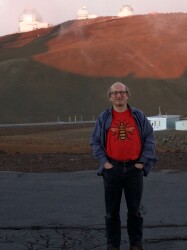BibTex format
@article{Marques-Chaves:2019:0004-6361/201936013,
author = {Marques-Chaves, R and Perez-Fournon, I and Villar-Martin, M and Gavazzi, R and Riechers, D and Rigopoulou, D and Wardlow, J and Cabrera-Lavers, A and Clements, DL and Colina, L and Cooray, A and Farrah, D and Ivison, RJ and Jimenez-Angel, C and Martinez-Navajas, P and Nayyeri, H and Oliver, S and Omont, A and Scott, D and Shu, Y},
doi = {0004-6361/201936013},
journal = {Astronomy and Astrophysics: a European journal},
pages = {1--12},
title = {Discovery of a giant and luminous Ly alpha plus C IV plus He II nebula at z=3.326 with extreme emission line ratios},
url = {http://dx.doi.org/10.1051/0004-6361/201936013},
volume = {629},
year = {2019}
}

